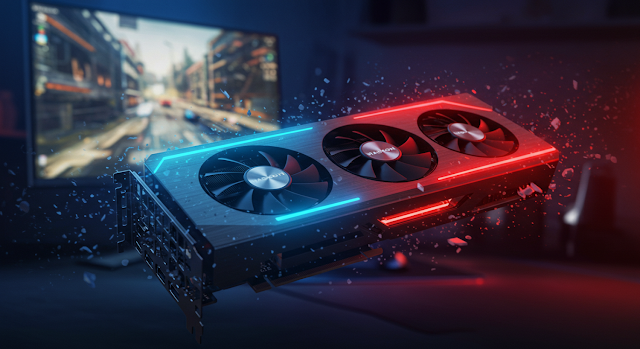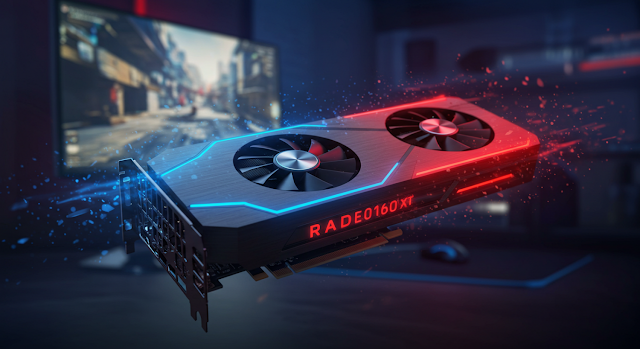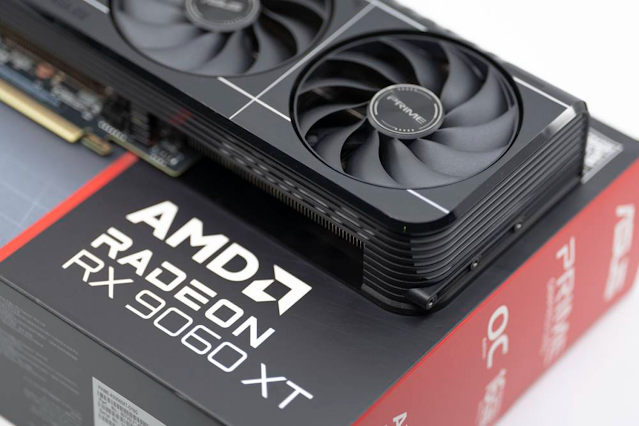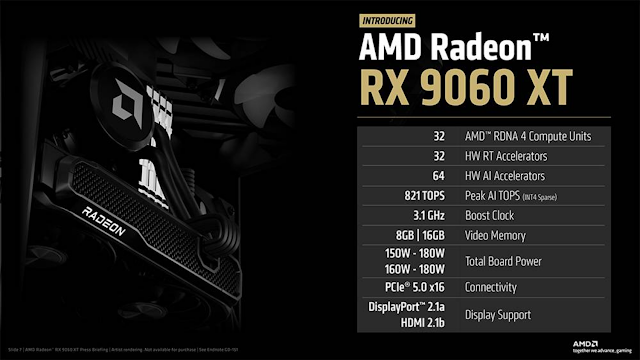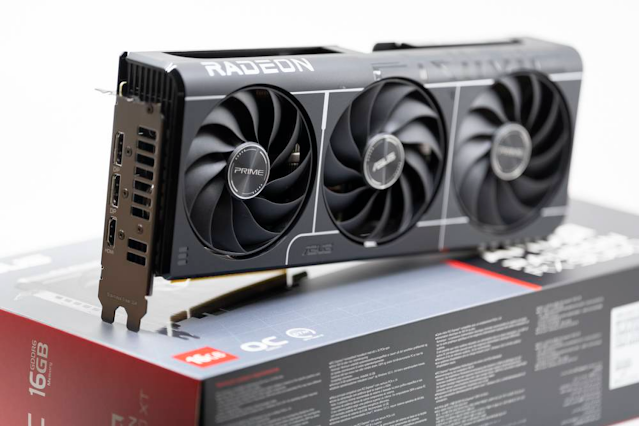Alright, folks, buckle up! If you’re anything like me, you’ve probably been on the edge of your seat, waiting to see what AMD had up their sleeve at Computex 2025. And boy, did they deliver! On May 21st, right there in Taipei, they officially pulled back the curtain on the new AMD Radeon RX 9060 XT and its sibling, the RX 9060. Now, I know what you might be thinking: “Another graphics card? What’s new?” But trust me, this one is different. 😊
The RX 9060 lineup is sitting just below the powerhouse RX 9070, which made its grand entrance back on February 28th. What’s truly exciting here is that both are built on the RDNA 4 microarchitecture, crafted with TSMC’s N4P process. This isn’t just a minor refresh; we’re talking about some serious architectural wizardry.
RDNA 4 has supercharged the memory subsystem, which means the GPU cores can access memory faster and more efficiently. Plus, they’ve beefed up the GPU’s scalar units, making auxiliary computations quicker and slicker. It’s like giving your computer a turbo boost!
They’ve also introduced dynamic register allocation, which is a fancy way of saying it can handle multiple tasks simultaneously with greater speed. And the compute units, those fundamental core units of the processor, have been optimized for better performance *and* power efficiency.
That’s a win-win in my book! But wait, there’s more. The RX 9060 XT rocks a 3rd-generation Ray Tracing Accelerator, which means real-time ray tracing performance for games and rendering is up to two times faster.
And for all you AI enthusiasts out there, the 2nd-generation AI Accelerator is here to crank up performance for LLM (Large Language Model) and machine learning tasks. So, in a nutshell, RDNA 4 is all about boosting performance, efficiency, and giving AI and ray tracing capabilities a much-needed shot in the arm. It’s pretty darn impressive!
RX 9070 XT Set the Stage, Now the RX 9060 XT Steps Up! 🚀
Let’s be real, before the RX 9070 XT hit the scene, there wasn’t a whole lot of buzz. In fact, many folks, myself included, had pretty low expectations. Why? Because the day before, Nvidia dropped their Blackwell architecture-based RTX 5070. And for what felt like forever, Radeon graphics cards always seemed to be a generation behind Nvidia’s latest and greatest.
The consensus was pretty much, “Eh, it’ll probably be ‘meh’ compared to Nvidia.”
But here’s where the plot thickens! The Nvidia RTX 5070, while new, only offered a marginal performance increase (less than 10%) over the RTX 4070 Super, yet its power consumption jumped by almost 20%. Meanwhile, the RX 9070 XT launched at a similar price point and guess what? It was neck-and-neck with the RTX 5070 Ti, which costs around 1.3 million won (about $950 USD) and performed just as well, with decent memory and impressive power efficiency. Suddenly, everyone’s perception shifted. That long-held belief that Radeon always trailed Nvidia? It was proven beautifully wrong.
The RX 9070 XT literally fired the starting gun for a Radeon comeback, and now, the RX 9060 XT is the next contender to step into the ring.
Unpacking the AMD Radeon RX 9060 XT: What’s Under the Hood? ⚙️
So, let’s get down to the nitty-gritty of the AMD Radeon RX 9060 XT. This bad boy is loaded with 32 RDNA compute units, 32 hardware ray tracing accelerators, and 64 hardware AI accelerators. For those who speak fluent “AI performance,” its TOPS (Tera Operations Per Second) for INT4 is a whopping 821 TOPS. If you convert that to the more commonly used INT8, you’re looking at around 410 TOPS. To put that into perspective, its raw AI performance is roughly on par with Nvidia’s RTX 4070 12GB. Not too shabby, right?
When it comes to memory, you’ll have two options: an 8GB GDDR6 model and a 16GB GDDR6 model. Now, the memory bus is 128-bit, which might not sound super high, but it’s important to remember that memory efficiency has improved significantly with RDNA 4. This card is definitely a “mainstream” graphics card, hitting that sweet spot for most current recommended system requirements. It’s designed to go head-to-head with Nvidia’s RTX 5060 16GB, which typically retails for around 700,000 won (about $510 USD).
Who is this card for? Well, if you’re rocking an older GPU, say an RTX 3070 or below, or even an RTX 2080 Ti or below, and you’re looking for a fresh, modern upgrade in the 500,000 won (around $365 USD) price range, the RX 9060 XT is going to be a fantastic fit. It offers a noticeable leap in performance without breaking the bank, which is always a win in my book!
Gaming Performance: Does the RX 9060 XT Deliver? 🎮
Alright, let’s talk turkey: gaming performance. Because, let’s face it, that’s what many of us are really here for, right? To put the RX 9060 XT through its paces, we hooked it up to a test PC sporting a Gigabyte X670 Aorus Elite motherboard, an AMD Ryzen 7 7950X3D, and 32GB of DDR5-6000 memory. We also made sure Windows 11 was fully updated and ran with the latest AMD Adrenalin Edition 25.10.09.1 graphics driver. Gotta keep things fair and square!
To get a baseline, we ran the usual suspects: 3DMark Time Spy and Fire Strike. Time Spy is our go-to for DirectX 12-based game performance, while Fire Strike is still a solid indicator for older DirectX 11 games. The results? The RX 9060 XT scored a respectable 16,637 graphics points in Time Spy and an impressive 39,634 in Fire Strike.
For context, an Nvidia RTX 5060 12GB typically scores around 37,200 in Fire Strike and 15,800 in Time Spy. The RTX 5060 Ti 16GB clocks in at about 42,300 in Fire Strike and 15,900 in Time Spy.
So, what does that mean in plain English? For DirectX 11 games, the RX 9060 XT is about 6.5% faster than the RTX 5060, but about 6.3% slower than the RTX 5060 Ti. However, when it comes to DirectX 12, the RX 9060 XT actually outperforms both of them! This is a big deal, especially if you’re primarily playing the latest and greatest titles. You can expect performance that’s either comparable to or even better than the RTX 5060 Ti, which is pretty darn good for this price point.
Hogwarts Legacy: Smooth as Butter! 🧙♀️
Next up, we took a magical trip to Hogwarts. We cranked everything up to Ultra settings and played for a minute, capturing the average frames per second. At Full HD (1920×1080), the RX 9060 XT delivered a fantastic 109.9 average frames, with even the dreaded 1% low frames staying solid at 33.2. Stepping up to QHD (2560×1440), we still saw a very smooth 68.9 average frames and a respectable 31.5 for the 1% low.
Considering Hogwarts Legacy recommends an RTX 2070 8GB, the RX 9060 XT easily surpasses that. This means you’ll be enjoying buttery-smooth gameplay even at QHD Ultra settings, maintaining that crucial 60 frames per second. And for those feeling adventurous, even 4K resolution at medium-high settings is on the table!
Kingdom Come: Deliverance II: A Challenging Feat! ⚔️
We also dove into Kingdom Come: Deliverance II, a title that just launched this past February and is known for its demanding graphics.
With recommended specs like an RTX 4070 or Radeon RX 7800XT, it’s a real benchmark. Since there wasn’t a built-in benchmark, we played the first two minutes of the tutorial to get our frame rates. At Full HD Ultra settings, the RX 9060 XT churned out an average of 102.2 frames, with the 1% lows holding strong at 83.5. Even at QHD Ultra, it stayed well within the comfortable zone with 69.7 average frames and 59.4 for the 1% lows. This truly shows that the RX 9060 XT can handle most demanding modern games at QHD without breaking a sweat.
Oh, and here’s a little secret: when we enabled AMD’s Frame Super Resolution (FSR) 3.1, the QHD frame rate jumped to an average of 97.2, with the 1% lows hitting 82.7! While upscaling technology can sometimes introduce minor visual quirks for some users, if maximizing your frame rate is the priority, FSR can boost your performance by a solid 20-30%. It’s a real game-changer when you need that extra push.
Ray Tracing: Stepping into the Light! ✨
Real-time ray tracing is where games and rendering truly come alive, simulating how light behaves in the real world. It’s incredibly demanding, often requiring up to 50% more computational power than standard rendering. For a long time, you needed a top-tier graphics card to even think about it.
But with advancements in technology, even mid-range cards are now capable of delivering a decent ray tracing experience. Thanks to the 3rd-generation ray tracing cores built into the RDNA 4 architecture, the RX 9060 XT delivers surprisingly good results.
We ran the GameTechBench to gauge its ray tracing performance. The RX 9060 XT scored 2658 points, roughly half of the Radeon RX 9070 XT’s 4285 points. This makes sense, as the RX 9060 XT has half the core count of its bigger sibling, so the performance scales pretty directly.
Still, at Full HD, we saw an average of 67.2 frames with the 1% lows at a very playable 34.1. While it might not be for the absolute highest settings, playing with ray tracing enabled at Full HD is definitely within reach, which is a remarkable leap from products just two or three years ago where it was practically impossible.
Cyberpunk 2077: Ray Tracing at 60 FPS on a Mid-Range Card? 🤯
To really push the envelope, we tested the RX 9060 XT’s ray tracing capabilities in Cyberpunk 2077. At QHD resolution with Ultra settings and ray tracing enabled, the frame rate hovered around an average of 29.44.
While this might feel a bit choppy for fluid gaming, that’s where AMD’s FSR 3.1 comes in to save the day! With AMD’s automatic resolution upscaling enabled, the frame rate more than doubled to a stunning 63.36 frames per second!
While FSR can make a huge difference, some users might notice a slight softness in still images. However, the ability to achieve 60 frames per second with ray tracing in Cyberpunk 2077 on a graphics card in the 500,000 won (around $365 USD) range is truly groundbreaking and a testament to how far these technologies have come.
FSR 4 Redstone: The Next Evolution of Upscaling 📈
Just when you thought it couldn’t get any better, AMD’s FidelityFX Super Resolution (FSR) upscaling technology is now in its 4th generation! They’re calling it FSR 4 Redstone, and it’s a significant leap forward. FSR 4 works in four stages, incorporating AI-powered features.
First, it uses neural network-based luminance caching to learn and predict how light reflects, then stores that information. Next, it readjusts real-time light flow. After that, machine learning algorithms work their magic to boost resolution. Finally, the GPU generates frames to significantly increase in-game frame rates. It’s pretty wild stuff!
I got a peek at the demo, and let me tell you, the images were noticeably sharper than FSR 3.1, and the frame rate gains were substantial. Game support for FSR 4 kicked off on June 5th with over 30 titles, and that number is expected to grow to 60 very soon.
To enable it, you’ll simply activate FSR 4 for a specific game within the AMD Adrenalin Edition software and then enable it in the game’s settings.
While I couldn’t test FSR 4.0 during my review as the game updates hadn’t rolled out yet, it’s definitely something to look forward to when these updates are available!
Key Summary: Why the RX 9060 XT is a Must-Have 📝
Let’s wrap this up with a quick rundown of why I think the AMD Radeon RX 9060 XT is going to be a superstar.
- Radeon Rebound: For a long time, the notion that ‘AMD graphics cards lag behind Nvidia’ was etched into gamers’ minds. And honestly, it often held true, even up to the previous generation. But Nvidia’s RTX 50 series mainstream cards came out with surprisingly conservative performance gains, while AMD’s RDNA 4 architecture exceeded expectations. While Nvidia might still hold the crown for ultra-high-end graphics cards, AMD has closed the gap significantly in the mid-range.
- Mainstream Marvel: The AMD Radeon RX 9060 XT, which I had the pleasure of reviewing, boasts an appealing performance and configuration for the mid-range market. It’s got 16GB of video memory, excellent gaming performance at QHD, and even respectable FHD ray tracing capabilities.
- Future Classic: This card has the potential to become one of those legendary graphics cards, like the Nvidia GTX 1060, the RTX 3060, or the Radeon RX 580 – cards that are talked about and used for years to come.
- Pricing Perfection: The 16GB model is priced at $349, and the 8GB model at $299. If you’re searching for a versatile, all-around graphics card that truly delivers, the AMD Radeon RX 9060 XT should absolutely be at the top of your list!
📋 Quick Summary
New architecture with enhanced memory and scalar units for better efficiency.
Directly competes with RTX 5060, offering strong performance at QHD.
3rd-gen RT accelerators make FHD ray tracing playable, even in demanding titles.
Next-gen upscaling with AI for sharper images and higher frame rates.
Frequently Asked Questions ❓
Well, there you have it, folks! The AMD Radeon RX 9060 XT is clearly a fantastic addition to the mid-range GPU market. It’s got the performance, the features, and the price point to make a real splash.
If you’re looking to upgrade and get a whole lot of bang for your buck, this card is definitely worth a serious look. If you have any more questions, feel free to ask in the comments below! 😊

